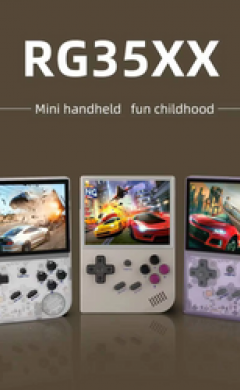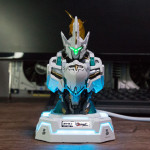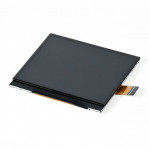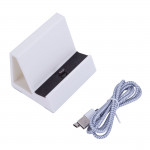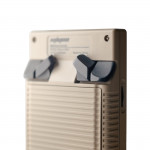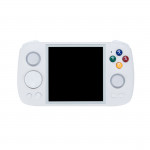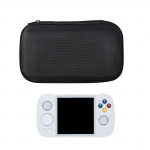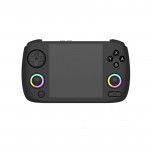TrimUI Brick Review: A Rock Solid Upgrade
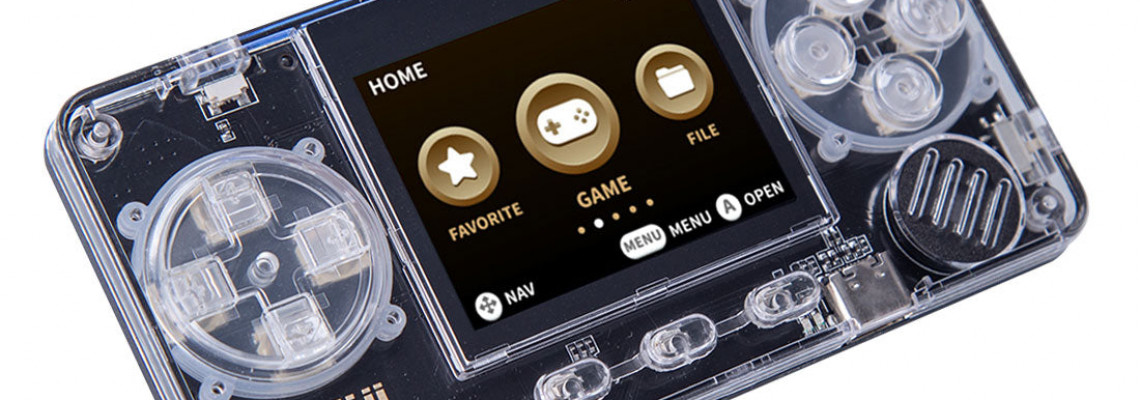
TrimUI Brick Review: A Rock Solid Upgrade
The Miyoo Mini+ and the Anbernic RG35XX are the two handhelds that may be considered entry-level devices for the handheld emulation hobby. Since their early 2023 launches, which may as well be a lifetime in this pastime, these tiny form-factor Game Boy clones have maintained their popularity.
Combining a well-known form aspect with a low entry cost creates a delightful, inexpensive amusement. However, a new competitor from a well-known brand has surfaced to challenge the entry-level rulers. Take a look at the Trim UI Brick.
TrimUI Brick Specs
- CPU: Allwinner A133P, 1.8GHz
- GPU: Imagination PowerVR GE8300, 660MHz
- RAM: 1GB LPDDR3
- Storage: 8GB eMMC, TF card up to 1TB
- Display: 3.2″, 4:3, 1024×768 IPS
- Wireless: Wi-Fi b/g/n, Bluetooth 2.1+EDR/4.2
- Audio: Front-firing stereo speakers, 3.5mm headphone jack, mono mic
- Battery: 3000mAh – Approximately 5-6 hours of life
- Ports: USB-C (charging, data, USB host), TF card slot
- Other: Vibration motor, RGB lighting, FN keys
- OS: TrimUI Stock Linux OS, MinUI available
- Dimensions: 73.2 x 109.9 x 19.9/11.79 mm
- Weight: 159g
Build & Design
The Brick is typically the first form factor that comes to mind when people discuss a device's "pocketability." It is a straightforward, portable design intended for on-the-go play. TrimUI appears that pressing my thumb to the shell left a little paw impression, but the Brick's predecessors undoubtedly had that part down. Ban's hands-on article states that the top rear plate behind the screen is solid metal. The metal component unquestionably gives the gadget a more robust feel, and it has me considering using the laser engraver at my neighborhood library.
The Brick's body color schemes are mostly solid, except for the LED buttons and backlight bar, which add a pop of color. Except for the blue Function button and the previously mentioned LEDs, the black unit I ordered and the red and purple versions maintain the same color scheme throughout the device.
The only variation is the white one, which has gray inputs over the white shell. It's refreshing to see a business with a clean and straightforward design strategy in a market where manufacturers frequently attempt to separate themselves from the crowd by using more outrageous styles and colors. The LED lights can be completely turned off if they are not for you, as though they have a slightly greater goal in mind for this release.
I have never used an analog pocket or any other analog device. Their stellar reputation is undoubtedly well-earned, but having that high-end feel in your hands comes at a price. Without having to sell plasma at the clinic to pay for the gadget in the first place, the Brick seeks to duplicate that experience as closely as possible.
Despite having a typical ABS plastic shell, the Brick feels substantial in the hands. Indeed, when I pick up the appropriately titled Brick, the first word that springs to mind is significant. Compared to the total of its interrelated parts, it feels stronger. The material itself performs a commendable job of preventing fingerprints and grease accumulation.
When I pressed my thumb against the shell, not much of a paw print was left. Ban's hands-on article states that the top rear plate behind the screen is solid metal. The metal component undoubtedly gives the gadget a more robust feel, and it has me considering using the laser engraver at my neighborhood library.
The Brick's body color schemes are mostly solid, except for the LED buttons and backlight bar, which add a pop of color. Except for the blue Function button and the previously mentioned LEDs, the black unit I ordered and the red and purple versions maintain the same color scheme throughout the device.
The only variation is the white one, which has gray inputs over the white shell. It's refreshing to see a business with a clean and straightforward design strategy in a market where manufacturers frequently attempt to separate themselves from the crowd by using more outrageous styles and colors. The LED lights can be turned off if not for you.
The Screen
When I first opened the Miyoo Mini+ in 2023 and launched Castlevania: Symphony of the Night, I was astounded by how much the screen improved my experience on a CRT nearly two decades earlier. It stoked my desire to investigate every aspect of the pastime and discover what else might be possible.
The screen was bright and colorful, making it ideal for portable entertainment. I enjoyed that experience, and The Brick makes it much better.
The Brick's screen is 3.2 inches smaller than Miyoo's but has a far better pixel density. At 1024 x 768 pixels, the Brick has a pixel density of 405 PPI.
While the Miyoo screen still appears fantastic when compared side by side, the Brick's crispness elevates the premium experience and makes it a deserving successor to many who came before it. There isn't much space for improvement beyond what is now available because older games and systems look so amazing on this screen.
Controls
The controls on the Brick are no exception to the Brick's philosophy of high-level simplicity. You'll be barking up the wrong tree if you're looking for something with analog triggers and hall sticks, but if you require a Game Boy clone, this should offer the ideal experience for games that predate the analog era.
Like the screen, the Brick's D-pad is slightly smaller than the Miyoo Mini+'s, but this doesn't lessen the gaming experience. Each input feels secure in its position on the eight-way axis. The pad is accurate enough to handle fireballs and even the most precise platformers, and I never experienced any problems with erroneous inputs while playing.
This is essentially what I envision people describing when they talk about the "clickiness" of button inputs. The face buttons deliver a pleasing micro-click of input acknowledgment and have little movement when pressed. The handheld's low profile enhances its sleek appearance without significantly compromising gameplay.
The shoulder buttons could be more difficult for people with specific preferences. The stock units included with the gadget were more than adequate for my requirements. However, TrimUI has tried accommodating those who want something different.
Three distinct sets of shoulder buttons were sent with my Brick. A more rectangular design and a rounded pair were pre-installed on the device, with textured lines for grip. They have done their best to satisfy community demands while maintaining a small design for the handheld and the era being imitated.
Software and Performance
We know what to anticipate regarding functionality because the Brick uses the same internals as the horizontal TrimUI Smart Pro. As a pleasant little bonus, the portable can handle parts of the N64 and PSP libraries and has the power to play up to PS1 without any problems. Although I wouldn't choose this over any of those methods, it's wonderful to be able to play about for fun.
The Brick's smaller form factor results in a smaller battery. Compared to the Pro's 5,000mAh battery, the Brick's is only 3,000mAh. I don't have the time or space to conduct a proper battery test, but based on my three charges, the device's five-hour stated life is accurate.
I kept switching between experiences while testing the Brick, experimenting with various things as I trudged. This means that the gadget was used for roughly 30—to 90-minute periods during the day. Battery consumption while sleeping was negligible, and the standby feature seemed to function flawlessly right out of the box.
In contrast to the CFW solutions now available for the Smart Pro, the TrimUI base OS is fully functional but has flaws. As of this writing, the only console game formally released is MinUI.
We should hope that CFW alternatives will continue to be carried over, given the excitement surrounding the Brick's release and the PCB's established track record. According to early reports, a few minor bugs and annoyances still need to be fixed, even though features like CrossMix will function immediately.
Experience
I've gotten the entire package since I've had the TrimUI Brick for a week or so. Told, the Brick shouldn't be much different if you've previously felt at ease using a gadget of this size and design, such as the MM+. It's great for the games I want to play on a device like the Brick because I'm a bigger guy with huge hands. I usually place my index fingers across my shoulders and am comfortable for a long session.
Combined with the screen and precise control, the Brick seems like a unique and high-end gadget. The stock firmware with the Brick only holds it back a little. Once the community has access to it, users can customize every aspect of the experience.
Conclusions
Look no further if you want to buy your first emu device in this style. It will be up to the user to decide if the update is worthwhile if they already have a Miyoo or Anbernic in this form. During the 11:11 deal, I purchased my item from AliExpress, which cost roughly $55. Given that the competition is up to $20 less expensive than that and that the Smart Pro is now selling for that amount regularly, the price will continue to decline over time.
This is the device in this form factor right now. Although I will always have a special spot for the Miyoo Mini+, TrimUI's offerings have left the competition to catch up. The Brick is a noteworthy entrance in a competitive industry thanks to the screen enhancements and the entire design bundle.
There will always be a subset of the hobby that is prepared to pay for the newest and greatest technology and style (such as the Analogue Pocket or Ayaneo Pocket DMG). However, TrimUI took a lot of the upscale glitz from those gadgets and offered it to the rest of us for a much lower price.
